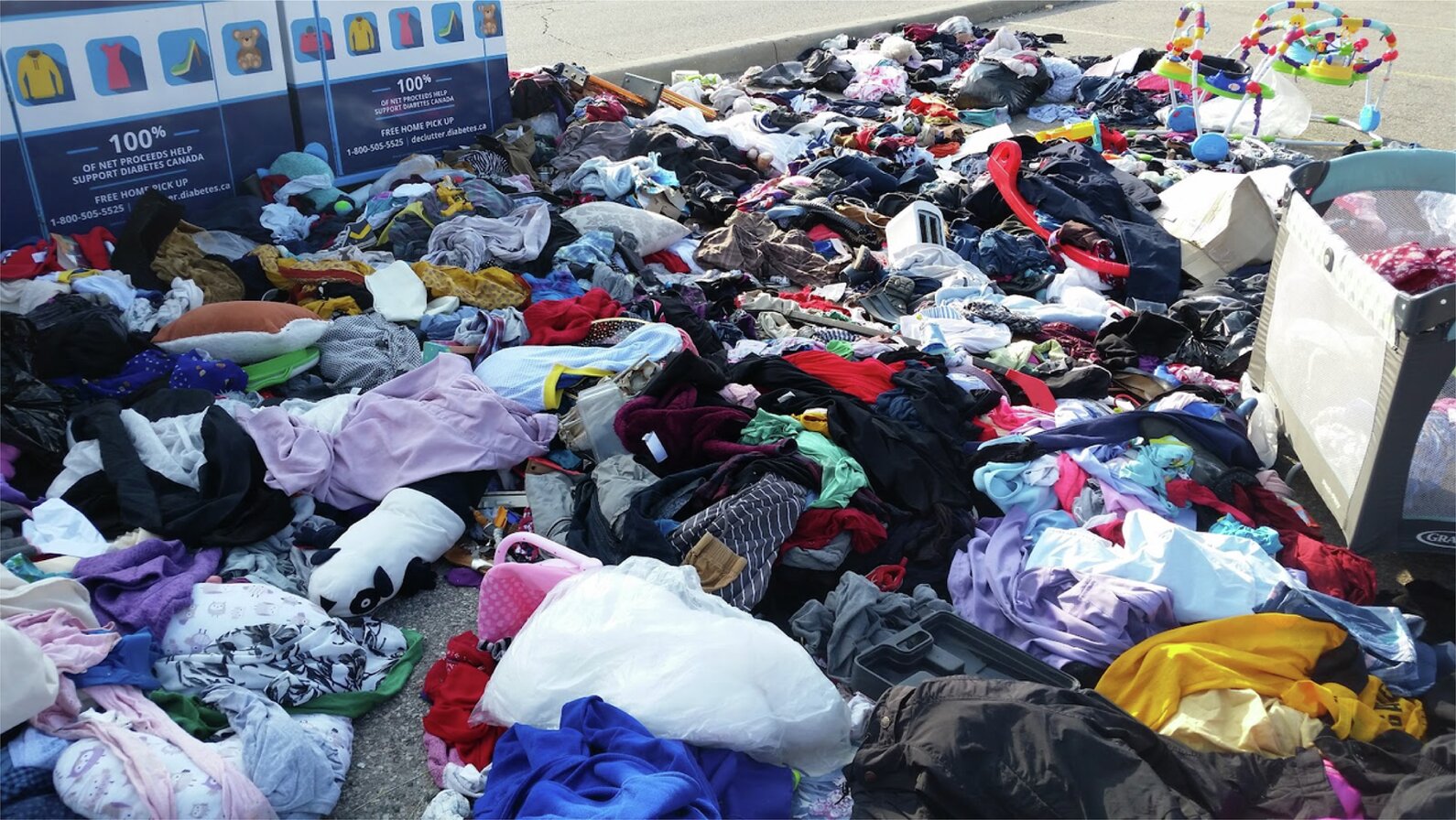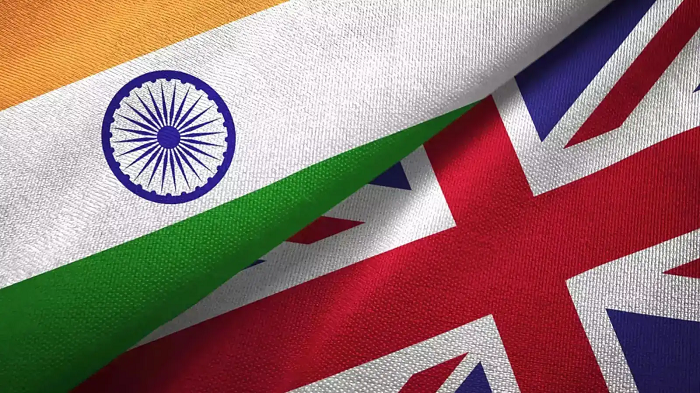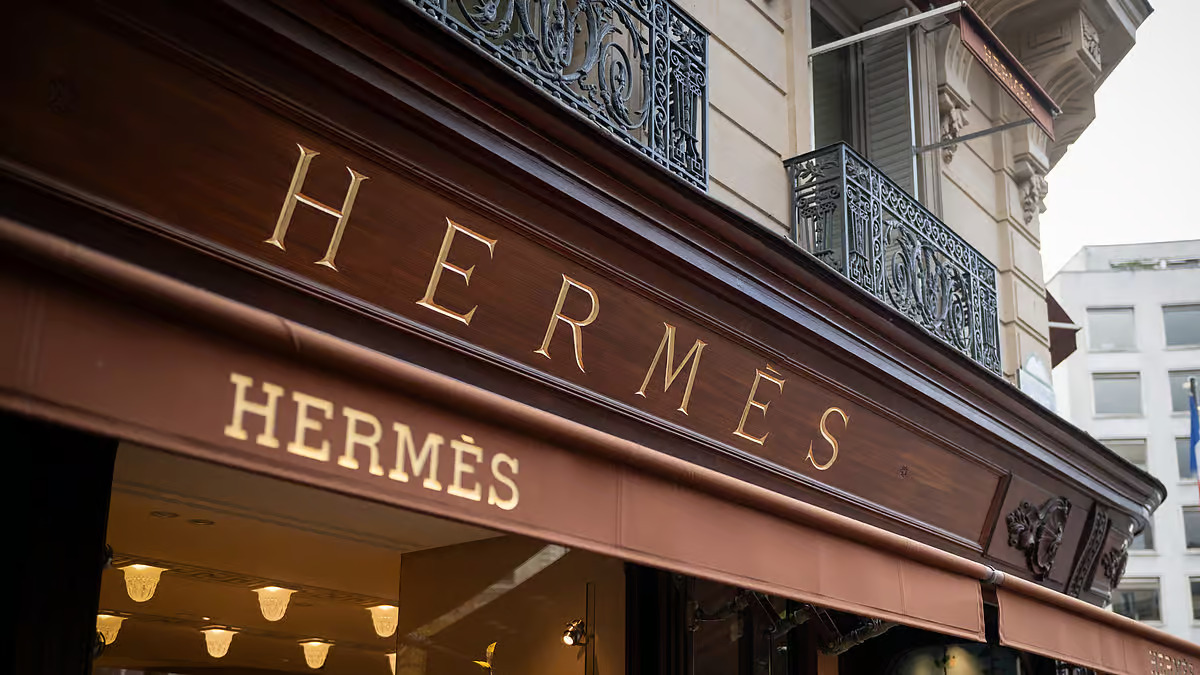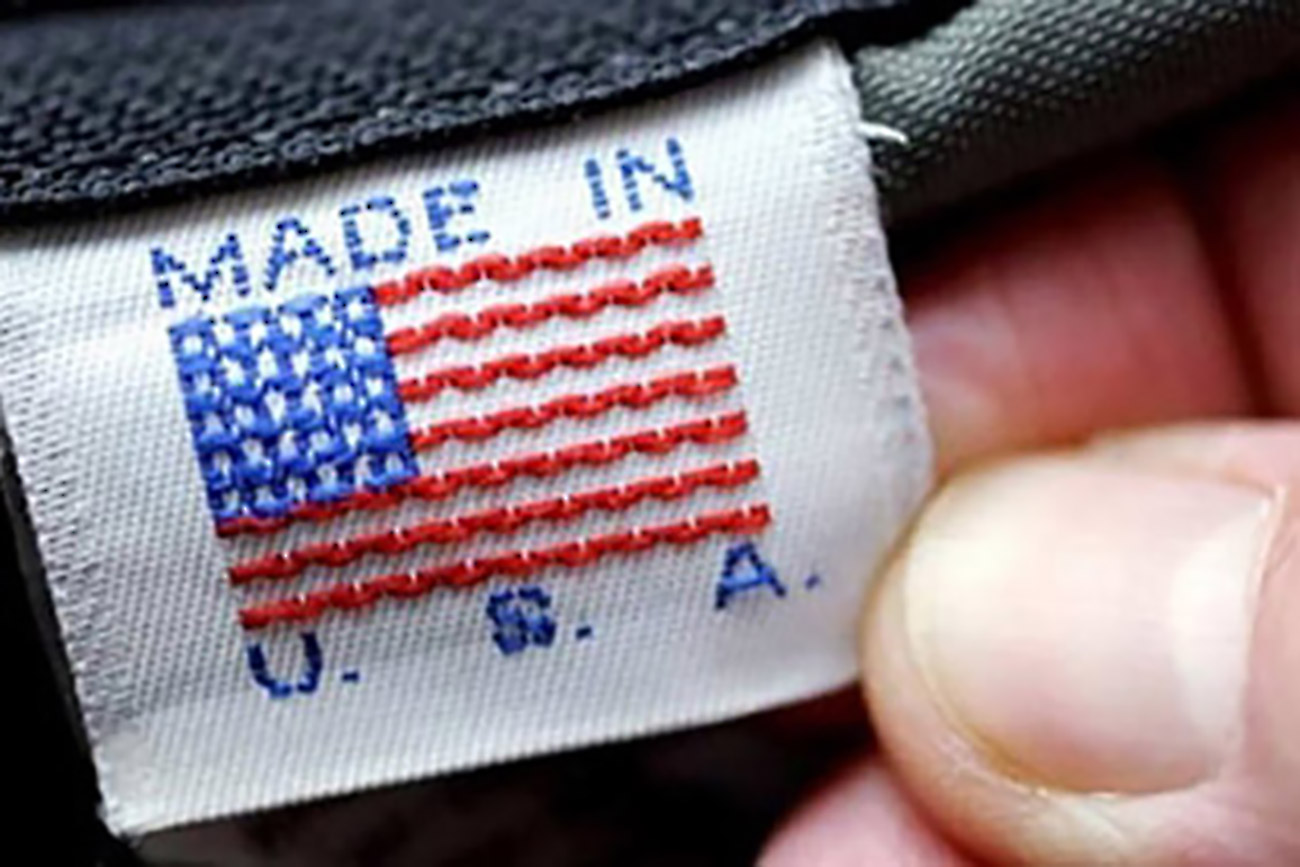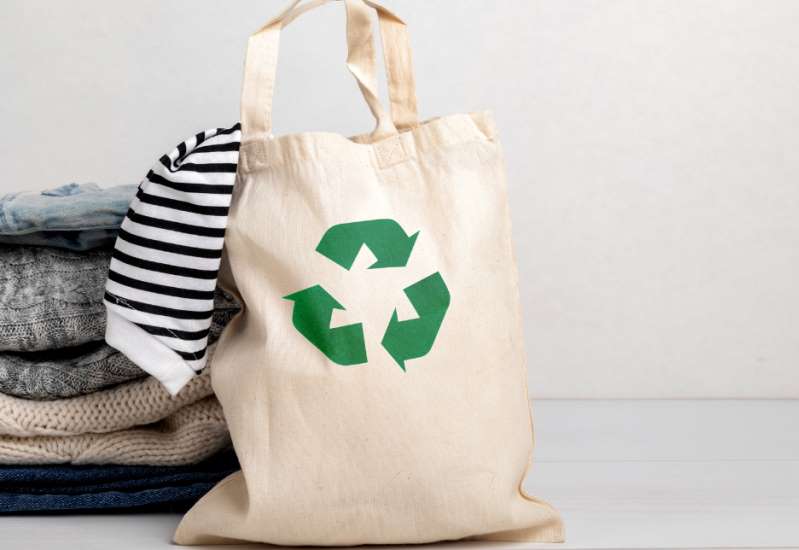FW
Exports of readymade garments, pashmina and leather products from Nepal will have duty-free access to the US market. This facility will last up to 2025. It’s expected to give a new lease of life to the readymade garment industry in Nepal, which was on the verge of collapse since the expiry of the multi fiber agreement in January 2005.
The garment industry was Nepal’s top exporter one-and-a-half decades back. The country can now expect more investment and employment in the garment sector and factories that manufacture ancillary products. Nepali apparel entrepreneurs believe that the US market can help resurrect the garment industry. To be able to fully capitalise on preferential treatment extended by the US, apparel entrepreneurs have sought an export incentive of up to 10 per cent for five years, subsidised interest rates from banks and financial institutions and abundant supply of power in factories.
There were over 400 apparel factories across the country that provided employment to 4,50,000 people when garment export was at its peak in 2001. About 90 per cent of readymade garments produced in the country were exported to the US. Readymade garments then had a 20 per cent share in total exports. Their ranking slipped to fifth position in overall exports of 2014-15.
Sri Lanka’s largest apparel exporter Brandix, has bagged eight Presidential Export Awards at a ceremony. The Brandix Group was honoured for its substantial contribution to the country’s economy. Brandix had been recognised earlier as the Lankan Exporter of the Year in 2012 and 2013. Theu also got the ‘Best Exporter in the Apparel Sector’ award in 2012 and 2013. It has earned four Special Awards for being the Highest Net Foreign Exchange Earner and the Highest Employment Provider in the export industry in 2012 and 2013.
The company has been acknowledged as one of the biggest winners across all sectors as it was conferred with various awards by the President Maithripala Sirisena and senior ministers of the government at the Nelum Pokuna Theatre recently. The event was organised after a lapse of several years by the Sri Lanka Export Development Board (EDB) that recognised export performances in 2010, 2011, 2012 and 2013.
With these eight Presidential Export Awards the tally for Brandix Group now adds up to 14 awards for exports that the group has earned over the years. The journey began in 2003 when it bagged the National Awards for Export Excellence (NAEE), and since then Brandix has been persistently winning various awards. The company was ranked first as Sri Lanka’s most outstanding exporter and best in the apparel sector by the Export Development Board in 2003.
The trends for the 2017 Spring/Summer preview was finalised recently at the View Premium Selection View in Munich. New ideas by international weavers and findings suppliers showcased more than 300 pre-collections for summer. A significant rise in the number of Italian collections was recorded. Manufacturers like Achille Pinto, Gratacós, Serates, Blue Line, Polo Divisione Tessuti, Miroglio, Eton Textile, Cabalane and Ormezzano were amongst the new exhibitors. While, design teams from brands like Hugo Boss, Tommy Hilfiger, Calvin Klein, Marc O’Polo and Baldessarini also visited.
View assists to formulate a platform for an intensive interexchange between industry and brands that is relevant for the overall development and a robust season’s start. The event attracted middle market brands like C&A and Peek & Cloppenburg along with premium brands. Sebastian Klinder, MD of View and Munich Fabric Start opined that the quality of View's offerings at this early date was highly appreciated by brands as textile innovations continue to evolve. Great care is taken in portfolio selection to present the collection in an innovative way.
Among the trends that emerged were a range of varied prints including graphic looks, ethical prints, stripes and new tweeds with mixture of techniques, such as a structured fond complemented with printed or embroidered motifs were seen. At Candiani Denim, the classical blue denim sees a return over the perished vintage character. Norbert Hinderberger from Candiani Denim acknowledged that with retail development, the consumer spends less for fashion that makes us think. Raw to destroyed denim look continues undisturbed in the market. Materials like silk and linen were seen in a natural look. Different shades of blue and pastel colours were the trend.
The entire collection is likely to be entrusted at the Munich Fabric Start/Blue zone, to be held from 2-4 February, 2016.
"The global market for denim is forecasted to reach $64.1 billion by 2020. The Indian denim industry has shown continual growth over the years and currently the country boasts of a denim manufacturing capacity of around 1.1 billion metres per annum. Its utilisation levels are pegged at 80-85 per cent. Despite the impressive statistics, the Indian denim manufacturing industry contributes 5 per cent to the global scenario, reflecting the overall performance of the textiles industry"

Although India is the second largest textile manufacturer and also the second largest exporter globally, it contributes a minuscule 5 per cent towards India’s overall exports. According to a report by UN Comtrade in 2013, India’s textile exports were estimated at $40 billion whereas China’s were pegged at $274 billion. There is a huge gap in the current capacity and potential of the textile sector. A white paper by Suryalakshmi Cotton Mills says that the “Make in India” initiative of the Indian government is targeted at bridging this gap effectively while catapulting the country into becoming a textile export powerhouse.
India to emerge a strong denim exporter

The global market for denim is forecasted to reach $64.1 billion by 2020. The Indian denim industry has shown continual growth over the years and currently the country boasts of a denim manufacturing capacity of around 1.1 billion metres per annum. Its utilisation levels are pegged at 80-85 per cent. Despite the impressive statistics, the Indian denim manufacturing industry contributes 5 per cent to the global scenario, reflecting the overall performance of the textiles industry. However, according to industry experts, denim is the only segment in the Indian textile industry that has the potential to grow manifold.
According to the Suryalakshmi report, an increasing number of global denim manufacturers are looking at India as an emerging denim export region owing to its quality standards, cost effectiveness and large pool of skilled work force. On the domestic front, the denim wear market is driven by increasing disposable incomes, westernisation of work culture and the ensuing rise in the popularity of denim jeans as business casual wear. With increase in globalisation, young India prefers denims as a part of their essential daily wear.
India offers numerous advantages to denim manufacturers. It is among the handful of countries that has a presence across the textile value-chain, from cotton to garments. In addition, it has a huge skilled workforce and offers quality products at competitive costs. To remain competitive in the globally, most textile companies have adopted global standards of safety and environment compliance. Additionally, the country’s demographics with an expanding purchasing power and modernising fashion sense further contribute to the sector’s growth. In fact, India has been ranked as a top destination for retail investments among 30 global emerging markets.
Challenges to denim manufacturing
Despite Indian denim manufacturing industry witnessing rapid growth in the last 4-5 years, technological expertise is still an issue. For the “Make in India” initiative to be successful for the textile sector, it is important that the government provides specific impetus for the growth of the indigenous denim industry. The technological integration of the manufacturing process coupled with capacity build-up can result in a rise in production of the fabric leading to enhanced domestic consumption and exports.
The Indian denim industry stands to benefit immensely from the ambitious “Make in India” initiative, the report points out. The vision of the programme has the potential to overhaul the segment’s perception and the country’s contribution in the world denim scenario. However, to turn this vision in to reality, India’s denim manufacturing segment needs to be equipped with facilitating mechanisms. Even more important is the effective implementation of these mechanisms. Once this is done, the strength of domestic Indian denim markets as well as its denim export capabilities will remain unparalleled.
The country offers multiple advantages as a denim manufacturing and outsourcing hub: India is among the few countries to have a presence across the denim manufacturing value chain – right from cotton production to denim garment manufacturing, It has abundant availability of skilled manpower and raw material, investments in best-in-class technological infrastructure, adoption of global technologies and manufacturing know-how, evolving fashion sense and product intelligence to compete in global markets, burgeoning middle-class with a rapidly expanding purchasing power and adherence to global standards of safety and environment compliance norms.
Initiatives such as the Make-in-India augur well for the development of this industry since they aim to promote innovation in the manufacturing sector and provide impetus to the sector’s growth by building best-in-class manufacturing infrastructure. However, for the denim sector to benefit from the outsourcing movement away from China, India’s policymakers need to formulate specific policies that cater to the segment’s demands.
www.suryalakshmi.com
The International Sourcing Expo Australia held from November 16 to 18, 2015, provided an outstanding platform for businesses to connect and transact in a face to face environment. Delivering an array of products and ranges from manufacturers and suppliers of apparel, textiles and accessories across multiple categories, this Australia’s largest and most comprehensive event was co-located with the China Clothing & Textiles Expo.
The event showcased 466 companies representing 12 countries. It attracted an audience of high quality decision makers from industry including manufacturers, importers, agents, wholesalers, distributors and retailers of all sizes. Entry to the event was restricted to trade only and visitors qualified for entry if they worked in the fashion, clothing, textiles, accessories, footwear or related industries. Educational institutions were also entitled to attend the event. Representation from all elements of the sourcing value chain ensured a comprehensive platform for networking and trade.
Buyers discovered new ranges representing over 20 categories on the expo floor, delivering more options than any other event in Australia. The 11 part seminar series presented by Australian and international experts drew almost 2,000 attendees across the three day event. This important value add to the event provides a platform for the presentation and discussion of topical issues for the industry. The next show will be held from November 15 – 17, 2016 at the Melbourne Convention & Exhibition Centre.
www.internationalsourcingexpo.com
Shima Seiki (Hong Kong), subsidiary of leading Japanese computerised knitting machine manufacturer will be holding a private exhibition of its machinery solutions in Hong Kong coming January.
The Shima CrossTex exhibition presents connectivity as a key theme, and will be held in cooperation with several note- worthy suppliers who will present their services at individual booths, offering visitors the opportunity to expand their network portfolio by connecting with businesses upstream of the supply chain.
CrossTex is also a showcase for the company’s latest selection of computerised flat knitting machines and other textile- related machinery, which received positive response from visitors to Shima Seiki’s booth at ITMA 2015 held in November. The new flagship Mach2XS Wholegarment knitting machine with SlideNeedles mounted on four needle- beds and spring-type sinkers, as well as the compact SWG-N2 series Wholegarment knitting machine that offers increased colour capacity as well as the capability for producing industrial textiles will be on display. Also SRY123LP features a pair of loop presser beds mounted above a conventional V-shaped needle-bed and is capable of producing unique knit fabrics with woven textures as well as technical textiles.
The new SVR workhorse series resets the industry benchmark for shaping machines in the tradition of Shima Seiki’s legendary SES and SSG machines. Also on display will be Shima Seiki’s P-CAM series multi-ply cutting machine and APEX-T design system for weaving. Demonstrations will also be performed on Shima Seiki’s SDS-ONE APEX3 3D design system that is at the core of the company’s ‘Total Knitting System’ concept. With comprehensive support of all aspects throughout the knit supply chain, APEX3 integrates knit production into one smooth and efficient workflow from yarn development, product planning and design to machine programming, production and even sales promotion.
www.shimaseiki.com
With athleisure becoming a huge hit among the consumers, denim companies are making changes in their collections to create an appeal. The New Year is just around the corner and industry insiders are of the opinion that unique and exclusive designs will rule the denim scene next year and that there is no alternative to a good pair of jeans.
One trend that has already emerged and is expected to continue is 70s-inspired designs that were ruled by flared jeans, culottes, and denim skirts. Designers are infusing their ideas to give these looks a modern touch with features like frayed hems, embroidery and hidden zippers. They are also taking inspiration from vintage 501 Levi’s to the old Maverick, Lee, Jordache, and vintage suede jackets to create something unique for the forthcoming seasons.
With consumer vying for something exclusive, raw denim is making headlines. Experts say that consumers are buying raw denim as a statement piece as well as rising awareness about side-effects of traditional washing methods. According to Ashley Guyatt, James Jeans social media strategist consumers are no more interested in typical pair of jeans but want styles like super-flares, cropped flares, very high waists, and multiple exposed buttons, among others.
www.levistrauss.com
Japan International Cooperation Agency (JICA) – the primary Japanese governmental agency responsible for technical cooperation component of Japan’s bilateral ODA (Japan’s Official Development Assistance) programme has signed Japanese ODA loan agreements with Bangladesh to provide up to 133 billion Yen for six major projects, with the readymade garment sector of the country coming under the first project.
The readymade garment sector is a main driver of the growth and comprises 80 per cent of the country’s exports. However, against a backdrop of fierce global competition and a lack of competitiveness in the industrial sectors, it will be more and more difficult for Bangladesh to achieve economic growth in a sustainable manner despite a stable 6 per cent growth for more than 10 years, Japan International Cooperation Agency (JICA) said.
The six projects to be funded by the Japanese agency include urban building safety and improving public services, encouraging industrial diversification and promoting economic growth by improving investment climate in Bangladesh, safer and efficient transportation, improving health service to a higher level and stable power supply, a press release issued by the Japan International Cooperation Agency noted.
www.jica.go.jp
A Bangladesh court has accepted the murder charge and has agreed to put several defendants in the case on trial over the collapse of the Rana Plaza which killed 1,135 workers, many of them making garments for Western retailers.
Senior Judicial Magistrate Md Al-Amin took the decision as he accepted the charges, which were filed in June by the criminal investigation department of the police. Forty-one defendants in total face charges over the April 2013 disaster at the complex, which housed five garment factories supplying to global brands. Plaza owner Sohel Rana is the principal accused. The court has issued an arrest warrant against those absconding and others, who are out on bail.
The incident, one of the worst industrial calamities put a question mark on safety conditions in Bangladesh. Duty free access to the west and low wages made Bangladesh one of the leading garment exporters with $25 billion a year industry. Estimates indicate that 60 per cent of the product are supplied to Europe, with 23 per cent heading to the United States and 5 per cent to Canada.
A recent study report of USA-based New York University's Stern Centre for Business and Human Rights has said that millions of people working in the readymade garment industry of Bangladesh still face unsafe conditions. The report also said that Bangladesh has more factories engaged in the global RMG business than stated by its industry.
The Supreme Court order banning the entry of goods vehicles into New Delhi has dealt a major blow to Surat’s textile traders. New Delhi is a major market for manmade fabrics including saris and dress materials made in Surat. Textile goods from Delhi, the country's biggest market for low cost saris ranging from Rs 200 to Rs 300, are further supplied to Chandigarh, Himachal Pradesh, Haryana, Bihar, Uttar Pradesh, Rajasthan and West Bengal.
No vehicle registered in 2005 or earlier will be allowed to enter Delhi even after payment of the enhanced green cess. For commercial vehicles registered after 2005, the cess has now been doubled from Rs 700 to Rs 1,400 for light commercial vehicles and Rs 1,300 to Rs 2,600 for heavy commercial vehicles.
Around 400 trucks leave for Delhi from Surat with textile goods daily. Most of these transport trucks are registered prior to 2005. Hence, these will not be allowed entry. These vehicles will have to dump the goods on the national highway outside Delhi.
It is believed the court order will increase the prices of textile goods supplied from Surat and other textile manufacturing centers. Wholesalers in Delhi will have to bear the extra expense of Rs 200 per parcel, one parcel contains roughly 150 saris and dress materials.


